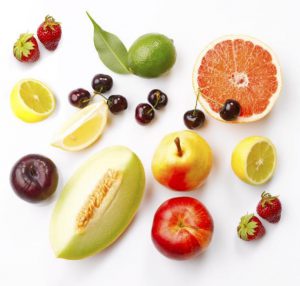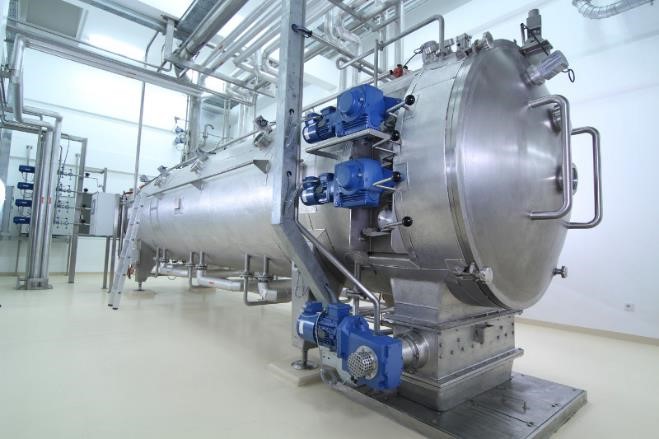There has been a persistent push towards health, wellness, and transparency in recent years. Consumers, more than ever, are carefully analyzing their foods to ensure they are consuming nutritious foods while avoiding unrecognizable ingredients.
International Food Information Council, 2016 Food and Health Survey
How much of an impact do the following have on your decision to buy foods and beverages?
(% rating 4 to 5 on a 5-point scale, from No Impact to A Great

In response, food companies are exploring ways to tackle the challenge of delivering the nutrition consumers expect from food without compromising on taste. After all, taste is the number one driver of food purchases – we’ve seen time and again over the years that if a food doesn’t taste good, it won’t be eaten no matter how nutritious it is. At the same time, the nutrition must be delivered using ingredients consumers trust and are familiar with. After all, it is much easier to relate to the nutritional value of “Orange Juice” on an ingredient label than “Ascorbic Acid”, even though both are nutritious. Ascorbic acid is just another name for Vitamin C! With the aid of today’s technology, though, it is becoming easier to deliver the products consumers are seeking.

Meeting the Challenge with Technology
Vacuum freeze dried ingredients are one way to deliver nutrition in a tasty way that is consumer friendly on a label. This type of processing technology is normally used with fruits or vegetables and allows these ingredients to appear on a label as “(fruit/vegetable concentrate)”. For example, vacuum freeze dried blueberries could be used to provide a blueberry flavor to a beverage, deliver the nutrition of blueberries, and appear as “blueberry concentrate” on the ingredient label.
 When fruit juices and other fruit flavored foods are developed, consumers expect the food to taste just like the fruit it shows on the label. Unfortunately, it’s not possible to just squeeze a fruit into a container and ship it all over the world due to issues like shelf life, stability, etc. To make juice safe, it must go through pasteurization, which is a heating process required to kill any microbes. Although pasteurization makes juice safe for us to drink, it has the unfortunate side effect of destroying the taste of the juice. Also in many applications, it is not practical to add liquid concentrate to a product to flavor it. This could increase the water activity, resulting in higher risk of spoilage, or could impact the textural quality of the product. With vacuum freeze drying technology, it’s possible to overcome these issues by drying fruit or vegetable concentrates into powders in a way that maintains the taste, nutrition and quality.
When fruit juices and other fruit flavored foods are developed, consumers expect the food to taste just like the fruit it shows on the label. Unfortunately, it’s not possible to just squeeze a fruit into a container and ship it all over the world due to issues like shelf life, stability, etc. To make juice safe, it must go through pasteurization, which is a heating process required to kill any microbes. Although pasteurization makes juice safe for us to drink, it has the unfortunate side effect of destroying the taste of the juice. Also in many applications, it is not practical to add liquid concentrate to a product to flavor it. This could increase the water activity, resulting in higher risk of spoilage, or could impact the textural quality of the product. With vacuum freeze drying technology, it’s possible to overcome these issues by drying fruit or vegetable concentrates into powders in a way that maintains the taste, nutrition and quality.
How Vacuum Freeze Drying Works
Vacuum freeze drying is a process in which a vacuum reduces temperature and pressure to the point where water can be converted directly from its solid phase (ice) into its gas phase (water vapor) without becoming a liquid; this is a process known as sublimation. In other words, this process allows us to remove water completely from a fruit or vegetable concentrate without cooking or destroying it. What is left after this process is a soluble powder that is very stable and retains the exact same flavor and nutrition as the fruit or vegetable it came from.

Historically, when these products come from the drying of juices and juice concentrates, they have been made with drying aids or carriers. Carriers help the products dry by giving it a sturdy amorphous structure that does not collapse and/or cook while drying. Carriers are a range of ingredients including maltodextrin, pectin, gum arabic, etc. However, consumers are increasingly trying to avoid these types of ingredients on their food labels. Luckily, it’s sometimes possible to use special equipment and processing techniques to use the natural sugars in these concentrates to create the consistency we need to dry these products without requiring carriers. These carrier free products may be labeled as “100% fruit juice” or “100% juice” and deliver taste and nutrition in one recognizable ingredient.
This same technique can also be used to add functional properties to a food. For example, if we wanted to add antioxidants to a food to protect from spoilage or add nutrition, raspberries could be vacuum freeze dried and added to the food as “raspberry concentrate”. Other examples include adding citric acid via lemon concentrate, fiber from apple concentrate, and natural preservatives from celery.
As consumer needs continue to evolve, processing technologies are one way that we can continue to find ways to deliver nutritious products that taste great.

 Travis works in flavor development innovation by utilizing numerous technologies, primarily in the area of citrus oils. He received his Bachelor's degree in biochemistry and is currently a Research and Process Development Chemist with Kerry.
Travis works in flavor development innovation by utilizing numerous technologies, primarily in the area of citrus oils. He received his Bachelor's degree in biochemistry and is currently a Research and Process Development Chemist with Kerry. 